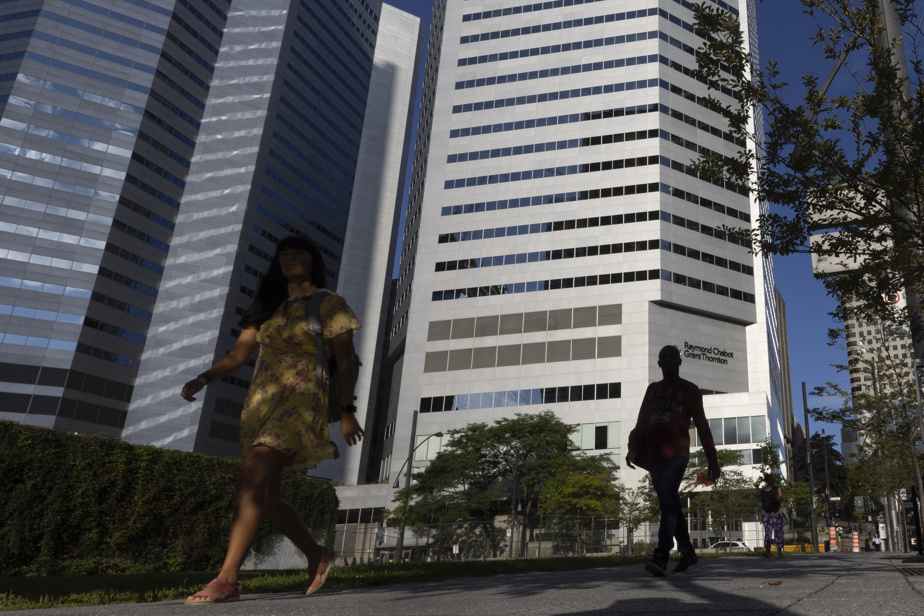Innovation, complex problem solving and corporate culture would not fully explain banks’ willingness to lead by example by asking their employees to return to work in the office.
Early signs of deteriorating credit quality are being seen in banks’ commercial real estate loan portfolios, according to a report released this week by National Bank.
Exposure to office space is becoming the main source of concern for investors, it is pointed out. The downside risk for profits is even considered significant by the analyst and author of the report Gabriel Dechaine.
According to this expert, the Royal Bank’s exposure to commercial real estate is undoubtedly a motivation pushing the largest financial institution in the country to ask its employees to return to work in the office three or four days a week this spring.
“Of course yes,” said Gabriel Dechaine in a telephone interview.
The banks – not just the Royal – are tenants of the buildings where their employees work. They also lend money to investors such as pension funds that own these buildings. Reducing the risk is a motivation, because if the return to face-to-face is not done in sufficient numbers, the value of the buildings will suffer.
Gabriel Dechaine, author of the report
Gabriel Dechaine maintains that the Royal Bank is the most exposed to office buildings with nearly 20% of its commercial loan portfolio associated with it. Bank of Montreal, TD Bank and National Bank have about 10% of their commercial real estate loans exposed to office space, he said.
Low occupancy rates
Commercial real estate risks have been on investors’ radar since the start of the pandemic. However, they have intensified in recent months, while office occupancy rates in major urban centers are hovering around 50% (or even less in some markets), points out Gabriel Dechaine.
The downside risk to bank profits is significant, he said. “Could we see a modest downturn, like that of the financial crisis that would result in a single-digit decline in earnings per share? Or could we see a severe downturn, like in the early 1990s, which would result in a potential drop in earnings per share of more than 25%? »
Given this backdrop and the turmoil in the regional banking sector in the US that could trigger a recession, investors are likely to maintain a cautious stance towards Canada’s big six banks.
Although he admits by his own admission that one should not be overstated, Gabriel Dechaine points out that problems can develop in a city that remains empty for too long, and that if he were mayor of a large city, he would do anything to avoid a disaster like the one experienced by Detroit. This Michigan town declared bankruptcy a decade ago after a long exodus of residents and businesses to the suburbs.
Last month, the CEO of the National Bank expressed concern for the vitality of downtown Montreal. A better balance is needed in his view between work in the office and at home. “If people return to the city center to work on average 80% of the time, it will be better in the long term”, said Laurent Ferreira.
National Bank is maintaining its telecommuting guidelines for the time being, which require employees to return to spend a minimum of 40% of their working time in the office. Employees of the Montreal financial institution are preparing to move in two months to the bank’s new head office, a newly erected 40-storey building at the corner of rue Saint-Jacques and boulevard Robert-Bourassa.
It was not possible to obtain a reaction or comment from the management of the Royal Bank. Our questions remained unanswered.
Royal Bank is the largest bank in Canada, but also the largest company in the country with a stock market value exceeding $180 billion.
